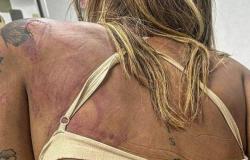Sesau (Secretary of Health), in partnership with the Ministry of Health, started this Wednesday, 24th, a microplanning training for the development of multivaccination activities, with a focus on intensifying vaccination against Yellow Fever in Roraima.
The event continues until Friday, the 26th, in the auditorium of the Boa Vista Eco Hotel, in the Mecejana neighborhood. The entire theme of the event is aimed at improving the performance of health professionals in Primary Care, Health Surveillance, Entomology and Vector Control at Sesau and the municipalities that carry out the actions.
According to the General Coordinator of Health Surveillance at Sesau, Valdirene Oliveira, the training was planned to accelerate the process of executing microplanning activities by municipalities, which despite having already received previous training, had not shown progress in completing the planning high-quality and efficient vaccination activities.
“Detailed planning is being carried out of the activities that must be carried out by all municipalities, with identification of the population to be vaccinated, with defined deadlines, instruments that will be used to monitor the scope of what was planned. We are taking advantage of this moment and carrying out this training with the aim of ensuring that municipalities leave here with their microplanning”, he informed.
In this first moment, the training is aimed at improving vaccination coverage for Yellow Fever, but the planning of activities must be used for all immunobiologicals available in the national vaccination calendar for children, adolescents and the elderly.
The objective is to restore the high vaccination coverage that the state has already achieved in previous years, and in a homogeneous way in all municipalities, thereby protecting our population from diseases that have already been eradicated and controlled through vaccination.
“We reported a case of yellow fever from the neighboring country[British Guiana]who came to our territory, was admitted here and diagnosed. So with this it is once again proven that diseases have no borders. And the unvaccinated population is vulnerable. Therefore, training contributes to municipalities having professionals with the technical capacity to carry out detailed planning activities to improve vaccination activities and thus protect everyone, highlighted the Coordinator. [GuianaInglesa)queveioparanossoterritóriofoiinternadoaquiefeitoodiagnósticoEntãocomissoficamaisumavezcomprovadoqueasdoençasnãotemfronteirasEapopulaçãonãovacinadaévulnerávelPortantoacapacitaçãovemcontribuirparaqueosmunicípiostenhamprofissionaiscomcapacidadetécnicapararealizarasatividadesdeplanejamentodetalhadoparamelhorarasatividadesdevacinaçãoeassimprotegeratodosressaltouaCoordenadora
IN-DEPTH SURVEILLANCE
Another focus of the training is aimed at strengthening YF surveillance actions, addressing the notification of epizootics in Non-Human Primates, entomological surveillance and risk assessment.
The event will also address the use of the SISS-Geo platform (Wildlife Health Information System) applied to the Surveillance of non-human primates.
The system is a free application that records, in real time, photos and information of animals and automatic geographic location via satellite, working completely offline.
In it, employees help to identify wild animals, in order to activate the alert of diseases that can kill animals and people, enabling faster surveillance, prevention and control actions of outbreaks such as yellow fever.
The veterinarian and surveillance supporter at the Center for Strategic Information on Health Surveillance of the Dsei-Y (Yanomami Indigenous Health District), Maíra Freire, highlighted the importance of strengthening the surveillance and registration of wild animals.
“I’m a veterinarian, so for me it’s super important to have the animal’s health as an indicator of the health of the environment. It’s a way to predict human cases so we can preserve everyone’s health in the end,” she said.
Check the schedule:
04/24/2024
13:30 – 14:00 – Opening and presentation of the work dynamics
14:00 – 15:15 – National Surveillance System for non-human primates and the implementation of SISSGeo SUS (Pedro Henrique de O. Passos CGARB/DEDT/SVSA/MS)
15:15 – 16:00 – Experience of the Northern Macroregion of Minas in yellow fever surveillance and the implementation of SISS-Geo SUS (Felipe Abreu IFNMG)
16:00 – 16:20 – Coffee Break
16:20 – 17:30 – Presentation of the SISS-Geo Platform: Getting to know the features of the SISS-Geo platform (Eduardo Krempser da Silva and Jessica Andrade de Oliveira (SISSGeo/Pibss/Fiocruz)
17:30 – 17:40 – Presentation of the working groups and dynamics of practical activities (Pedro Henrique de O. Passos CGARB/DEDT/SVSA/MS)
04/25/2024
09:00 – 10:30 – How to make a record: Practical exercise (App) ((Eduardo Krempser da Silva and Jessica Andrade de Oliveira (SISS-Geo/Pibss/Fiocruz)
10:30 – 10:45 – Break
10:45 – 12:00 – Exploring the SISS-Geo Platform – Outcome module (Eduardo Krempser da Silva and Jessica Andrade de Oliveira (SISS-Geo/Pibss/Fiocruz)
12:00 – 2:00 pm – Lunch
14:00 – 17:00 – Integrated simulation (in the field) – Surveillance of zoonotic arboviruses and registration in SISS-Geo (CGARB/DEDT/SVSA/MS; SISS-Geo/Pibss/Fiocruz)
17:30 – Coffee Break
04/26/2024 – Practical class in the territory of the Border Battalion
Group 1 – Surveillance of non-human primates – Surveillance strategy, step-by-step investigation and sample collection with biosafety
Group 2 – Entomological surveillance applied to Yellow Fever – Surveillance strategy and vector collection method
Tags: Training addresses strengthening surveillance vaccination yellow fever Roraima
--





